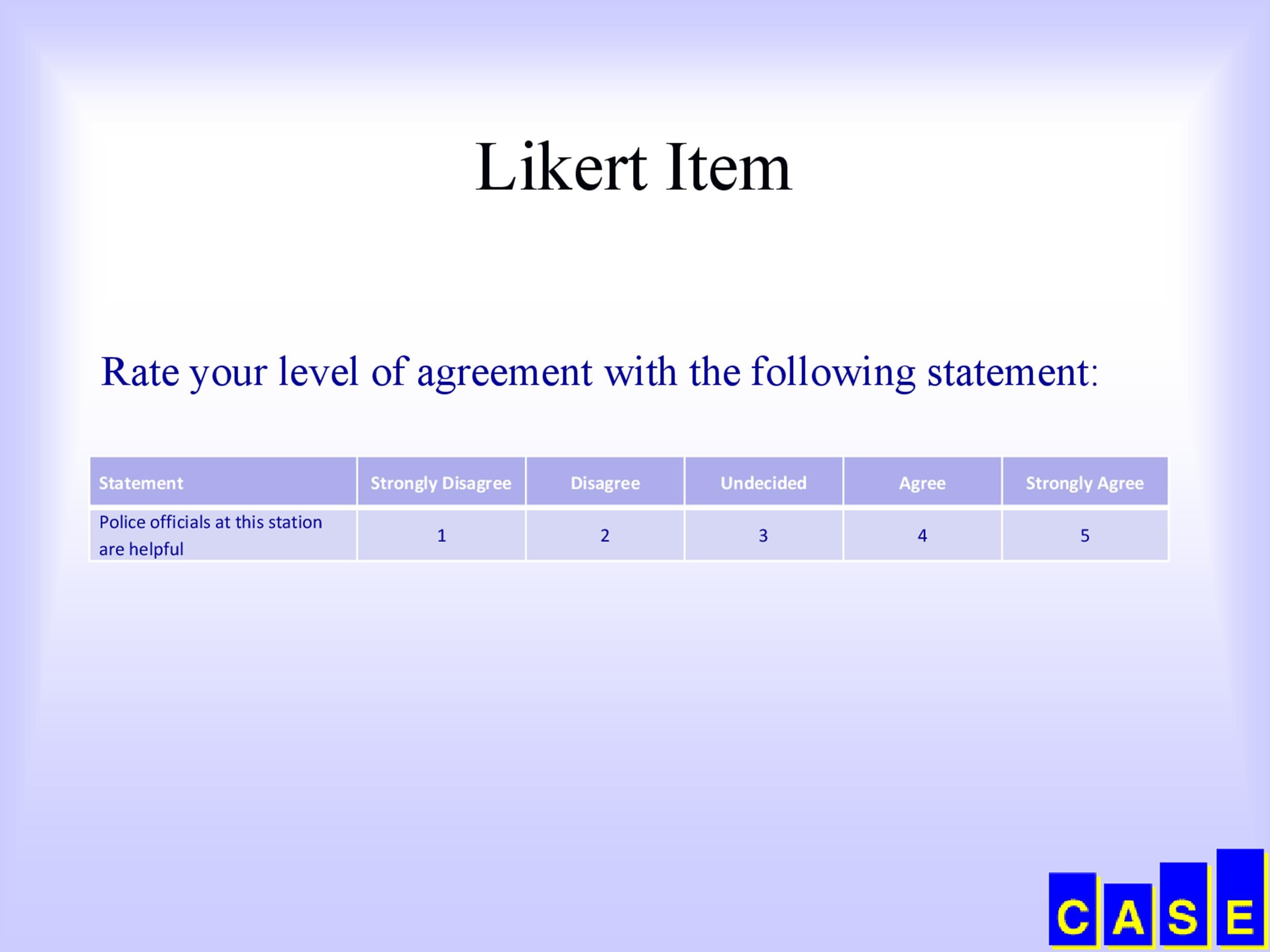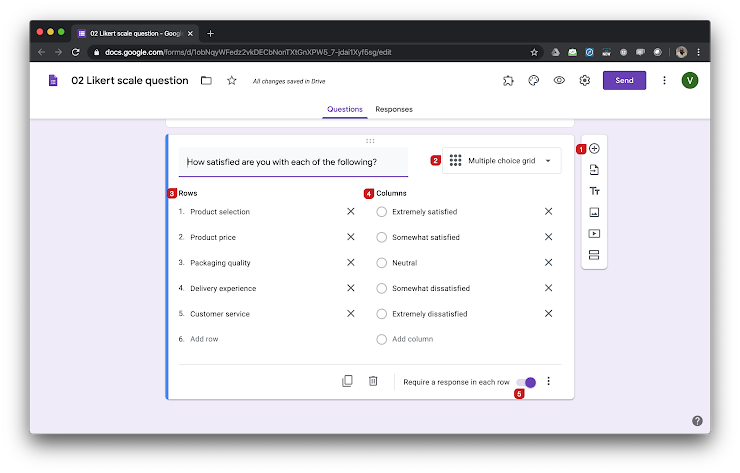39 11 point likert scale labels
32 Epidemic curves | The Epidemiologist R Handbook Simple example. 2 steps are required to plot an epidemic curve with the incidence2 package:. Create an incidence object (using the function incidence()) . Provide the data; Specify the date column to date_index =; Specify the interval = into which the cases should be aggregated (daily, weekly, monthly..); Specify any grouping columns (e.g. gender, hospital, outcome) CDC Coffee Break: Using Likert Scales in Evaluation Survery Work Justto note, the 5‐point Likert scale is the most common scale. 5. Likert‐typescales have features that are similar to the traditional Likert scale. For example, a Likert‐type scale does have an ordered continuum of response categories and a balanced numberof positive and negative options. One difference is that Likert‐type scales may have labels for each response option or …
Nominal Vs Ordinal Data: 13 Key Differences & Similarities - Formpl 10.10.2019 · Compared to interval data, nominal and ordinal data are less informative. Interval data is measured along a scale, in which each point is placed at an equal distance from one another. Although nominal and ordinal data gather relevant information, with ordinal data having a scale to it, the inequality of the scale leaves them at a disadvantage.

11 point likert scale labels
Survey Items Should Include A Neutral Response: Agree, … 19.04.2011 · On average only 9% of users selected the neutral point (shown in the graph below). One reason is that the putative neutral point is not really neutral in the minds of users. Something also seen in the 1994 meta-analysis by Nielsen & Levy where they found the mean response was a 3.6 on 5 point scales, significantly higher than a 3 (Nielsen ... What is a Survey Rating Scale? + [Types & Question Examples] 05.03.2020 · Smiley Scale A smiley scale is a type of rating scale that uses emojis to represent emotions ranging from negative to neutral and positive. It is a 5-point rating scale that swiftly communicates the emotions of the respondent and it is used for qualitative data collection.. It allows the respondent to communicate his or her feedback, opinions and experiences in terms … Scale (social sciences) - Wikipedia Likert scale – Respondents are asked to indicate the amount of agreement or disagreement (from strongly agree to strongly disagree) on a five- to nine-point response scale (not to be confused with a Likert scale). The same format is used for multiple questions. It is the combination of these questions that forms the Likert scale. This categorical scaling procedure can easily be …
11 point likert scale labels. Can Likert Scale Data ever be Continuous? - The Analysis Factor 10.07.2020 · A very common question is whether it is legitimate to use Likert scale data in parametric statistical procedures that require interval data, such as Linear Regression, ANOVA, and Factor Analysis. A typical Likert scale item has 5 to 11 points that indicate the degree of agreement with a statement, such as 1=Strongly Agree to 5=Strongly […] Survey Response Scales: How to Choose the Right One - CXL 17.04.2022 · How you design a survey or a form will affect the answers you get. This includes the language you use, the order of the questions, and, of course, the survey scale: the default values and ranges you use. Survey response scales can be embedded in the survey (e.g., 1–5, 1–10, etc.), chosen via a drop-down menu, or included as part of the survey language. Scaling Techniques - Definition, Types - The Investors Book 14.05.2019 · Definition: Scaling technique is a method of placing respondents in continuation of gradual change in the pre-assigned values, symbols or numbers based on the features of a particular object as per the defined rules.All the scaling techniques are based on four pillars, i.e., order, description, distance and origin. Should You Use 5 Or 7 Point Scales? – MeasuringU 25.08.2010 · In general the effects of usable or unusable applications tend to outweigh the much smaller effects of scale points, labels, scale directions and poorly written questions. So if you find yourself debating whether there should be 5 or 7 points in your rating scales then you’ve probably already spent too much time worrying about it. Focus more effort on finding good benchmarks …
Scale (social sciences) - Wikipedia Likert scale – Respondents are asked to indicate the amount of agreement or disagreement (from strongly agree to strongly disagree) on a five- to nine-point response scale (not to be confused with a Likert scale). The same format is used for multiple questions. It is the combination of these questions that forms the Likert scale. This categorical scaling procedure can easily be … What is a Survey Rating Scale? + [Types & Question Examples] 05.03.2020 · Smiley Scale A smiley scale is a type of rating scale that uses emojis to represent emotions ranging from negative to neutral and positive. It is a 5-point rating scale that swiftly communicates the emotions of the respondent and it is used for qualitative data collection.. It allows the respondent to communicate his or her feedback, opinions and experiences in terms … Survey Items Should Include A Neutral Response: Agree, … 19.04.2011 · On average only 9% of users selected the neutral point (shown in the graph below). One reason is that the putative neutral point is not really neutral in the minds of users. Something also seen in the 1994 meta-analysis by Nielsen & Levy where they found the mean response was a 3.6 on 5 point scales, significantly higher than a 3 (Nielsen ...

7 Point Likert Scale - 5 Likert Scale Example - SampleTemplatess - SampleTemplatess - Tv ...









Post a Comment for "39 11 point likert scale labels"